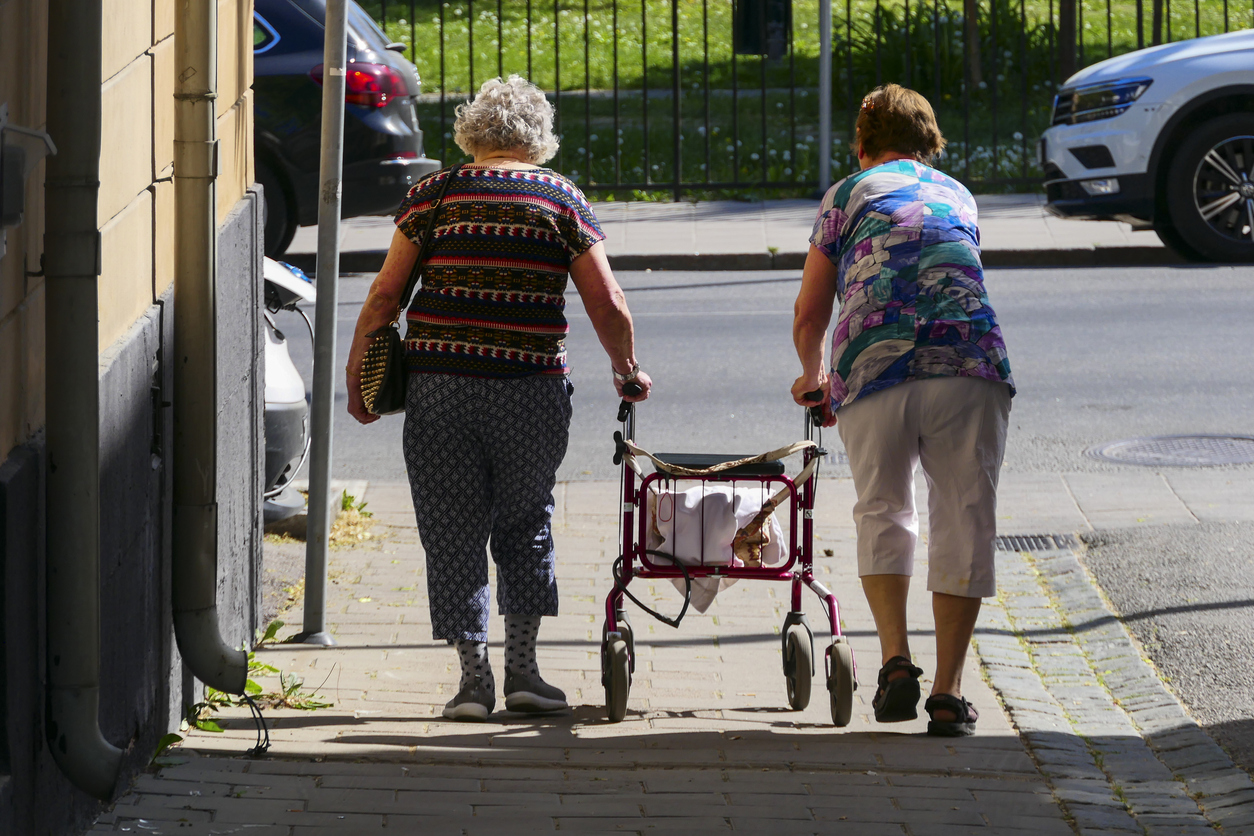The disproportionate impact of COVID-19, the intensification of climate change threats, and shifting global demographics undermining caregiving systems are just some of the forces lately exacerbating risks to the safety and well-being of older persons worldwide.
Yet, with no single international treaty or organization authoritatively safeguarding the international human rights (IHR) of elders, creative thinking will be required to meet the needs of this growing population. The human rights community can advance such thinking by considering the applications of three distinct yet complementary IHR lenses: age, disability, and vulnerability.
Age: The rights of children are exceptionally well established under IHR law, culminating with one of the nine core human rights treaties: the Convention on the Rights of the Child (CRC). This comprehensive treaty includes 54 articles, but perhaps its single most important provision is that parents, caregivers, governments, and all others must determine and then act “in the best interests of the child.”
The human rights principles established for the earliest phases of life would seem to offer a ready parallel for the later phases. And there is some warrant for this—a few of the core human rights treaties establish “age” as a category covered by non-discrimination protections, and the Universal Declaration of Human Rights itself acknowledges “the right to security . . . in the event of old age.”
However, these parallels should be taken only so far, and indeed, the analogy between elders and children breaks down fairly quickly. The raison d’être of the CRC relates to the lack of maturity, the state of dependency, the incomplete decision-making capacity, and the limited autonomy that characterize the physical, mental, and emotional status of children. Consequently, comparisons between the youngest and the oldest members of the human family can be highly problematic. Indeed, autonomy, self-determination, and respect for the experience of a long life are key values for most elders. Sensitivity to the realities of all parts of the lifespan is much needed, but older people emphatically are not children, and any temptation to overstate this analogy must be resisted.
Disability: As with the rights of children, the rights of disabled persons are also the subject of one of the core human rights treaties. The Convention on the Rights of Persons with Disabilities (CRPD) clarifies that while a person may have a disability, this is not the sum of their interests or identity. Further, the treaty clarifies that disability is at least partly a social construct. In the words of the CRPD, “disability results from the interaction between persons with impairments and attitudinal and environmental barriers.” Disability thus exists not only within individual bodies but also within social contexts.
Unquestionably, IHR protections established on the basis of disability can be of great value with regard to specific health-related challenges experienced disproportionately by elders. But older age is not in itself a disability, nor does disability encompass the full range of threats to elders’ well-being. Such threats are manifold and can be rooted in changing societal norms, social isolation, abuse and neglect by caregivers, lack of employment opportunities, unstable income, and a host of other concerns that go far beyond the frailties of the human body.
As with the category of age, then, the concept of disability offers an important dimension to efforts to protect older persons. But at least one further dimension needs to be added to the mix.
Vulnerability: Given the uses, but also the limits, of the “age” and “disability” paradigms, it can be useful to apply a third lens: vulnerability. While the term itself appears only sparingly in major IHR texts, it has two distinct meanings: one social and one individual.
The former meaning perhaps comes most readily to mind in the form of the many groups that are vulnerable to human rights abuses by those outside. The term was used in this way, for instance, by former UN High Commissioner for Human Rights Michelle Bachelet when, speaking in the context of COVID-19, she noted in 2021: “In terms of medical harms, poverty and unemployment, and social isolation, older people have been made to be deeply vulnerable—especially those living in care homes and institutions.”
And yet, it’s crucial to recall that older individuals in many countries count among the most affluent, socially influential, and politically active segments of their societies. Just as Bachelet acknowledged the realities facing many elders, she argued strenuously against ageist assumptions: “In reality, the older population is an incredibly diverse group.”
It is thus that the second meaning of vulnerability—a characteristic of the individual human condition—becomes relevant. As noted by scholar Ingrid Nifosi-Sutton in a book-length work on the topic, vulnerability is most fundamentally “a condition whereby an individual is affected or can potentially be affected by physical or emotional harm . . . Defined as such, vulnerability is universal in the sense that it unavoidably features in everyone’s life or may occur in everyone’s life.”
The concept of individual vulnerability thus offers a conceptual thread that can tie together age, disability, and many dimensions of human rights. The rights of older persons must be vigorously respected, protected, and fulfilled not on account of their age per se, nor due to any specific disability, but because of unique vulnerabilities too often associated with this stage of the human life course.
Taken together, the complementary lenses of age, disability, and vulnerability can help sharpen our understanding of the human rights of older persons. In the recent words of the UN Special Rapporteur on Older Persons, “For all their contributions throughout their early years, for the knowledge and expertise they can pass on to younger generations, for all the life they have yet to live,” elders are due no less.




